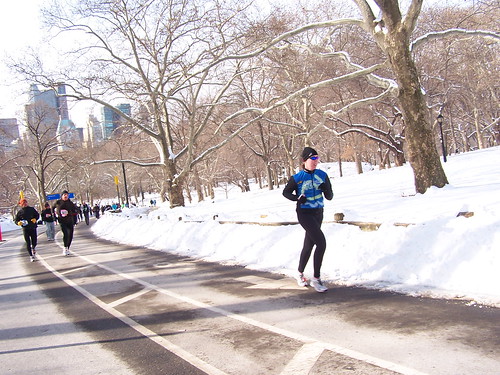
photo credit: smith_cl9
Every year we watch thousands of athletes compete on the Ironman® and 70.3® race circuit — after all as coaches we travel to most of the major events on the race calendar. Race day is special not just for what happens, but because it’s the culmination of months of training and focus.
While race day is all about execution, all the training leading up to this point determines the nature of your race. Speed isn’t something magical that shows up, it’s earned. And no part of your training is more speed focused than what you do in the winter.
You Will Plan A Full Season
The first thing you should do is sit down and create a roadmap for your full season. This will be your overall guide to building fitness and allowing you to peak for your A race of the year. Using the Endurance Nation approach to seasonal fitness, you will incorporate time for building your fast in the OutSeason® and follow that up with ample time to add far in the Race Prep phase. Here are two articles that look at the season planning process in more detail: A Season Map and Season Planning Case Studies.
You Will Select Appropriate Activities
The hardest part of the winter time siren song of volume is the true variety of options. Outside of the usual triathlon disciplines, you can ski, skate, hike, ride cross or MTB. You can look outside of aerobic work and find yoga, crossfit, core strength, weight training and much more. Before you know it, you could easily be singing up for the same amount of training time you did in the winter!
Instead, you’ll drop the swim workouts unless you average slower than 2:00 per 100 yds in the pool. You won’t lose that much swim fitness and it only takes a few weeks get it back (here’s another article where you can learn about our no-swimming policy for the winter).
If you want some diversity in your winter training cycle, you can pick one or two outside activities to complement the work you are doing to build your fitness. An example would be skate or cross country skiing that you did once during the week and once on the weekends.
We vastly prefer you picking one additional activity to replace swimming, something that you pursue in-depth, as opposed to filling your calendar with too much.
You Will Skip “Base” Work, Focusing on Fast Instead
Your competition will break out the fixed gear bike. Could be there’s a big marathon that everyone in your hood will want to do…like Disney. Whatever the endurance challenge might be, let your them do it.
The more time your age group competition spends in Zone 1 means less time they’ll actually be building speed or getting faster. They don’t know any better, because they are doing exactly what the elites and pros do — pile on the miles.
The unspoken challenge of a volume-oriented approach is being able to do enough miles in zone one. If you take a look at the average pro triathlete training schedule, they are riding 15 to 25 hours a week at that level. Then you add running and swimming to the mix.
Sure the volume works; the only problem is you can’t have a full-time job, family, or other responsibilities if you want to get the full benefits because you simply can’t do enough training — and recovery from it — for it to work. In other words, one five-hour ride a week simply won’t cut it.
Focus on Training ROI
As a savvy age-group triathlete, there are many other things weighing on your mind outside of trying to log more hours than anyone else you know. The winter is an excellent time to focus on excellence in everything you do outside of your regular in-season training: you have work, social and family commitments that can use your attention. You do this now to earn the right to take time in the summer for your training and racing.
Instead of just piling on hours, you will focus on improving the critical metrics of threshold power (bike) and pace (run). This means hard interval training in both sports, three sessions each a week, with workouts limited to about an hour. That’s right, a baseline of about six total hours of training.
This gives you plenty of time to recover from each workout, and to dominate in the other areas of your life that matter. After three to four months of this focused training, your bike and run fitness will be at season peak levels. You’ll be ready for a short break and then it’s time to turn your attention to adding some volume on top of this newly created speed.
Conclusion
A lot of what you’ve read here runs contrary to traditional triathlon training. Don’t let that deter you; we have put over 5,000 triathletes through the OutSeason® since 2007, and the data and testimonials don’t lie. So before you fall inline with your training partners, remember that the only “foundation” you need in the winter is speed related.
After all, as an Ironman® or 70.3® triathlete, the actual race-specific training of the final twelve weeks is more than enough time to ramp up your endurance. It’s time to break with tradition and find some new fitness…good luck!


Leave a Reply